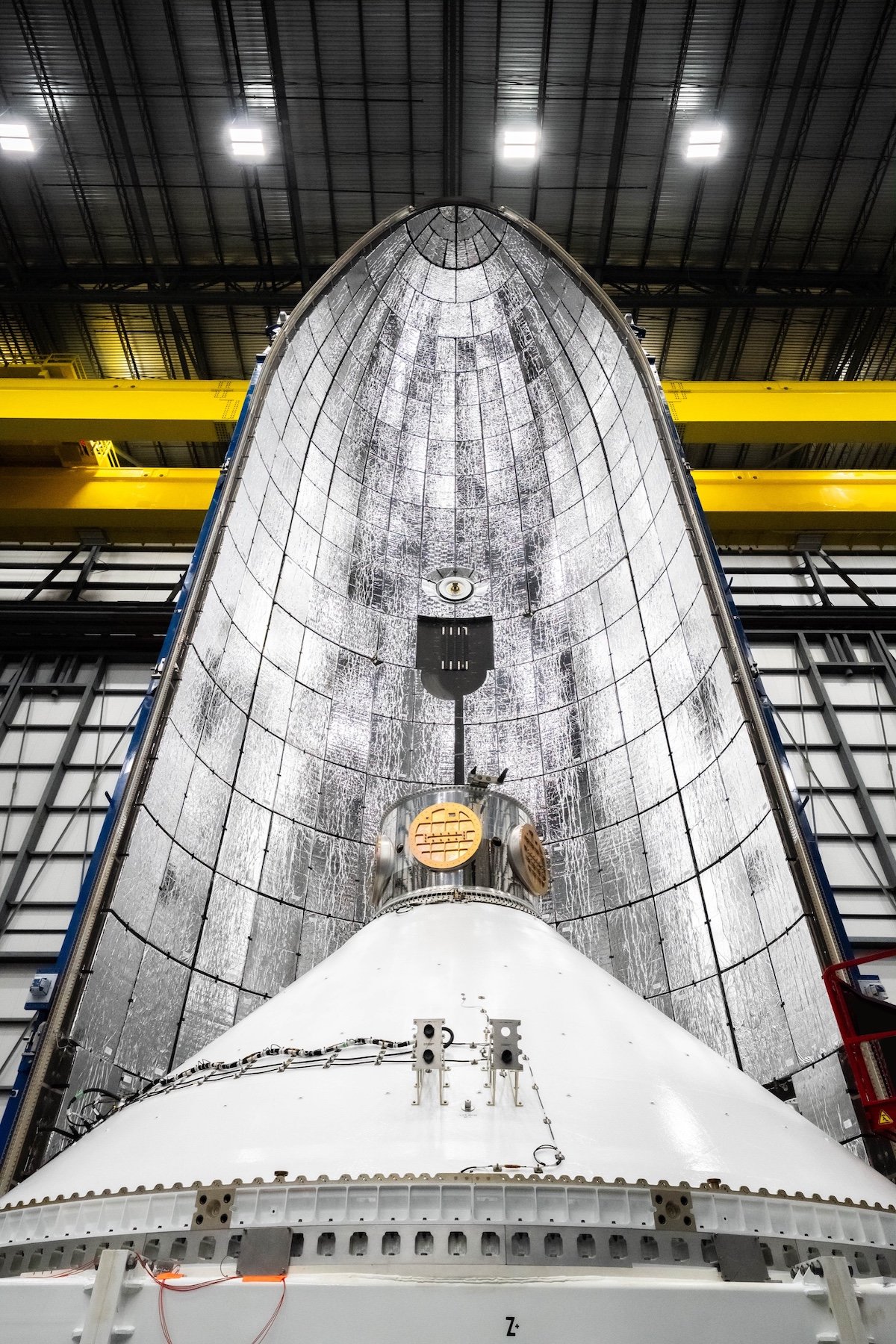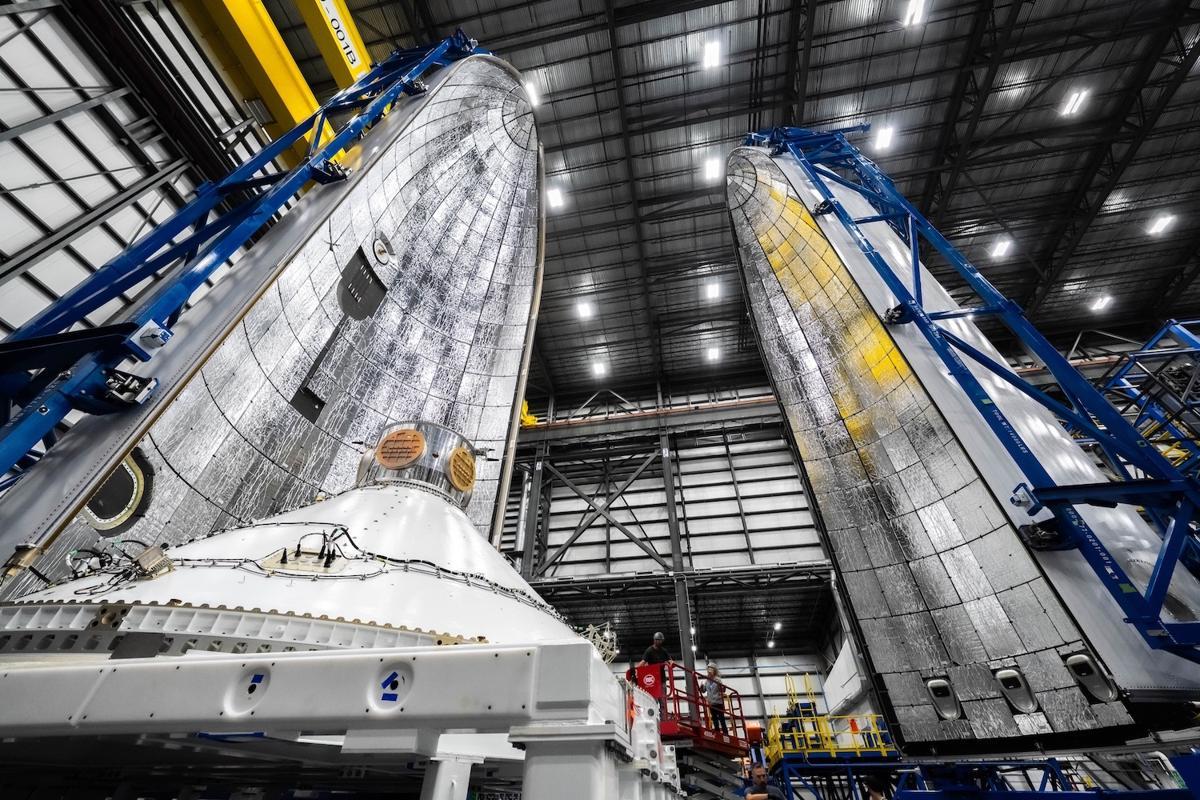“3, 2, 1, launch.”
At 2:03 a.m. on the 16th (local time), the first launch of the large rocket ‘New Glenn’ by American space company Blue Origin was successfully conducted at the Cape Canaveral Space Force Base in Florida, USA. New Glenn left the launch pad with a roar and reached ‘Max Q’ where the rocket receives the greatest pressure about a minute later, and then safely separated the first and second stages of the rocket about three minutes later. The first stage, designed to be reusable, was scheduled to land on the sea barge ‘Jacklin’ waiting in the Atlantic Ocean, but this failed.
The second stage carrying the orbital spacecraft ‘Blue Ring Pathfinder’ safely entered the target altitude. Blue Ring is a spacecraft that transports fuel and cargo to Cis-Luna, the space between the Earth and the Moon. In this launch, the second stage and the blue ring will not be separated, but will orbit together for 6 hours to check communication functions and safety.
Although it failed to land for reuse of the first stage of the rocket, it was evaluated as successful in that it landed the spacecraft in the target orbit on the first launch. The industry believes that if reuse becomes possible through additional launches, New Glenn will be able to take over a portion of the private launch vehicle market dominated by SpaceX. As of 2022, the private launch vehicle market size is approximately 10 trillion won.

New Glenn is a large rocket with a height of 98 m and a diameter of 7 m, about the height of a 30-story building. The thrust is approximately twice that of Space The maximum weight of Falcon 9 is 22 tons, which is about half the weight of New Glenn.
Differences are also seen in the engine, which is called the ‘heart’ of the rocket. New Glenn is a combination of seven ‘BE-4’ engines that use liquefied natural gas (LNG) as fuel, and is more efficient than the Falcon 9 engine that uses liquid kerosene as fuel. Another advantage is that it does not produce soot when fired, so it can be reused more times. In fact, the Falcon 9 can be reused an average of 13 times, but New Glenn is designed to be reused 25 times, which can significantly reduce launch costs as much as the Falcon 9.
Professor Lee Chang-hoon of the Department of Aerospace Engineering at KAIST predicted, “Recently, as satellite launches have increased around the world, launch supply is insufficient compared to rocket demand,” and predicted, “New Glenn will be able to take on the transportation volume that Falcon 9 was unable to handle.”

The remaining task for New Glenn is to build trust. Because a single launch involves a lot of cost and risk, stable launch of a rocket is of utmost importance. Currently, SpaceX’s Falcon 9 has launched a total of 420 times, showing a success rate of over 99%. Professor Lee said, “Usually, at least four successful launches in a row can be considered stable.”

This launch is a signal for Blue Origin to enter the space rocket market in earnest. Blue Origin, founded in 2000 by Amazon founder Jeff Bezos, has so far operated a small rocket called ‘New Shepherd’ for space tourism. Space tourism, which started for the first time in 2021, consists of a course that goes up to an altitude of 100 km, where passengers experience weightlessness, and then come back down to Earth. Founder Bezos himself was on board the first space tour. This is the first time that a launch vehicle capable of transporting cargo to low Earth orbit or higher, like New Glenn, has been launched.
Reporter Choi Ji-won jwchoi@donga.com
Source: www.donga.com


